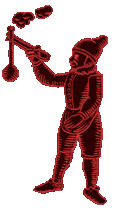Brain and its magic - Art of 4 elements article
by Natasa Pantovic Nuit
(United Kingdom)
Albert Einstein. ‘I must be willing to give up what I am, in order to become what I will be.’
A human brain is truly extraordinary. A healthy brain has some 200 billion neurons. Conscious mind controls our brain only 5% of the day, whereas the subconscious mind has control of our thoughts 95% of the time. A human being has 70,000 thoughts per day. The brain requires up to 20% of the body's energy despite being only 2% of the human body by weight.
Somewhere , within our brain, we have a potential for higher mathematics, complex physics, art, and amazing richness of thoughts, feelings, and sensations. However, we are mostly controlled by our brains, and we are yet to learn how to best use its potential.
Perhaps this is the task of the next phase of our evolution - utilising our brains better, understanding the 95% of its sub-conscious functionality, becoming more creative, less bombarded by useless thoughts, more focussed, and more peaceful.
Jill Bolte Taylor, PhD, a brain scientist, who recovered from a massive left hemisphere blood clot in her book ‘My Stroke of Insight’ talks about her experiences during the eight years that took her to completely recover. She was unable to walk, talk, read, write or recall her life. However, she refers to this state of her being as Nirvana, a word used to describe a profound peace of mind.
Describing the right brain, she says that the right brain is like a parallel processor. It thinks in pictures, it is non-verbal, it is non-linear, and creative. The right brain has no sense of time, it is playful, it sees humour, and it is lost in the flow. The right brain is compassionate and it is associated with the heart. It is intuitive and takes us into the peacefulness of the world around us.
The left brain is like a serial processor and it is interested in the past and future. It thinks in language, and is concerned with the details. It is logical and it is the critical analytical part of our being.
The traditional educational methods, its curriculum, and the exam focus, ensure that we emphasise the development of the ‘left brain’ hemisphere, and with this approach the students quickly lose motivation and the interest for the science and its magic. Two fundamental assumptions of formal education are that students retain knowledge they acquired in schools, and that they can apply them in situations outside the classroom. But is this correct? How much do we really remember and how relevant our knowledge is? The likes of Albert Einstein, Leonardo da Vinci, and Mozart created their master pieces from a place of inspiration, and creativity. It is likely that they had a capability to fully utilise the virtues of both brain hemispheres.
To understand children’s capability to learn, educational psychology develops and applies theories of human development.
Rudolf steiner’s model of children’s development links physical, emotional, mental and moral development. In his approach he equally values rational and imaginative approach to learning, his schools teach art and dancing not only as a way of expression, but as a way of understanding and mastering cognitive thinking. An example of an alternative method of learning is a movement therapy included in the Waldorf curriculum called: Eurythmy. The word stems from Greek roots meaning beautiful or harmonious rhythm. The dance is used to awaken and strengthen the children’s expression and to stimulate imagination. Eurythmy works with mathematical forms, beginning with a straight line and curve, and proceeding to more complex geometric figures developing a child's coordination and concentration. Rods or balls are also used in exercises to develop precision in movement. Philosophically, it acknowledges a child's capacity to communicate through non-verbal gestures. Eurythmy is made up of discreet movements that represent various phonetic sounds. The feelings & thoughts have gestures that are beyond our conscious awareness. Eurithmy attempts to explore the variety of feelings & thoughts through the form, movement, language, rhythm, colour and form. Through this art children learn the wisdom of emotional intelligence that helps their holistic growth.
Article by Natasa Pantovic Nuit. Art of 4 elements (www.artof4elements.com) is a web portal containing a wealth of information about Spirituality, God, and our journey to Enlightenment. The poetry, quotes, eBooks, videos, articles that you will come across on these pages are inspired by Life, Love, Alchemy, God. The alchemy of this mixture is there to inspire you to further create, going back to Life re-newed, shining Love...
Comments for Brain and its magic - Art of 4 elements article
|
||
|
||

